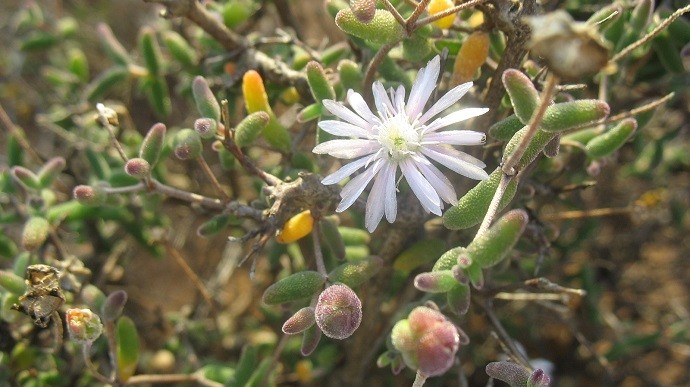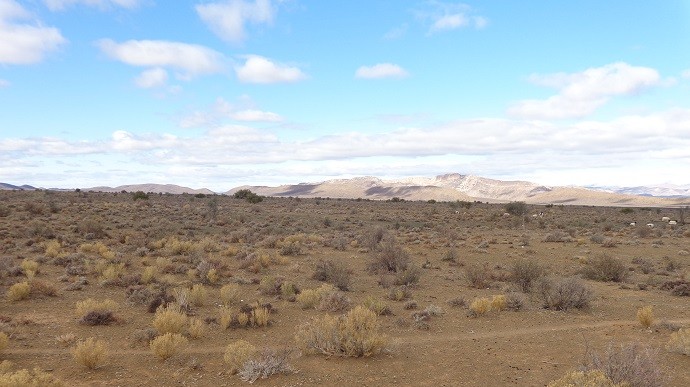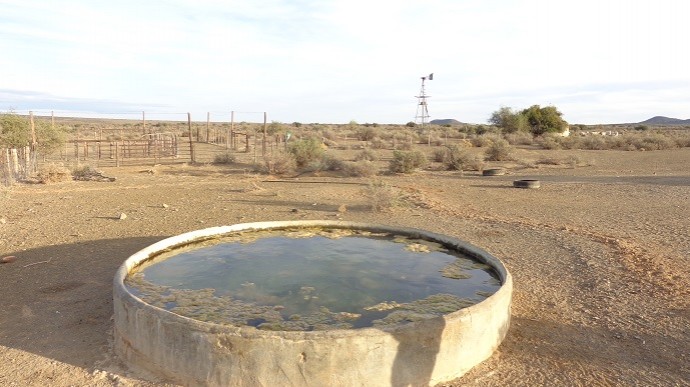Tourism is one of the few sectors of the economy that is growing in South Africa, thanks in part to our unique and world-class natural and cultural resources.
To capitalise on an already-thriving tourism sector, heritage sites and national parks need to better understand what tourists are looking for when they visit, and need guidance to address challenges and improve overall experiences. Researchers at UP’s Tourism Management Division have developed a tool to help do just this, and tested it out at several major sites around South Africa. Their findings are already helping the National Department of Tourism (NDT) improve on tourist experiences in South Africa and address specific challenges at individual sites
Tourism is one of the few sectors of the economy that is growing in South Africa, thanks in part to our unique and world-class natural and cultural resources. To capitalise on this, managers of heritage sites and national parks need to better understand what tourists are looking for when they visit these sites, and need guidance on how to address challenges and make tourist experiences more memorable overall.
Researchers at UP’s Tourism Management Division in the Faculty of Economic and Management Sciences have developed a comprehensive tool to help do just this, and tested it at several major sites around South Africa. The tool identifies what makes a tourist’s visit memorable and enjoyable, and explores expectations to see how sites can better cater for tourists’ needs. Their findings are already helping the National Department of Tourism (NDT) to improve on tourist experiences in South Africa and to address specific challenges at individual sites.
Watch the video in the sidebar to learn more about tourism in South Africa, view the infographic to learn what makes a holiday memorable, or view the gallery to see some of South Africa's popular tourist destinations.
Click on the pages below to find out how UP researchers help government boost local tourism, how SA tourist sites can attract more visitors, how to measure holiday memories, and why sharing information is vital for the tourism industry.
UP researchers are working with the National Department of Tourism to improve tourist experiences at attractions around SA and contribute to a more competitive tourism industry.
The tourism industry has in recent years made a growing contribution to the South African economy, even as other sectors have struggled in a restrained economic climate. To maintain this growth, the National Department of Tourism (NDT) has asked the Tourism Management Division at the University of Pretoria (UP) to investigate how South Africa can become more competitive as a tourist destination.
“Tourism is increasingly a government priority because it has the potential to increase jobs,” says Prof Berendien Lubbe, who led the study. To sustain tourism’s contribution to the South African economy, she says, tourists must have satisfying and memorable experiences.
“It is important to know that sites are meeting tourist expectations, and if not, what needs to be done.”
UP’s recent work in this field has provided a wealth of information on general tourism trends around the country, identified areas where tourist sites are excelling and where they can improve, and provided in-depth recommendations for a few specific sites.
Across varied sites like the Cradle of Humankind (Gauteng) and iSimangaliso Wetland Park (KwaZulu Natal), researchers compared tourists’ expectations and experiences, and assessed the sites in terms of management and service, infrastructure, and tangible and intangible attractions. They then compiled site-specific reports as well as a general report for the NDT on memorable tourism experiences in South Africa.
Across all five sites studied, the major motivation for visiting was to appreciate the beauty of the place, followed by a desire for a positive life experience, and a wish to learn something new. Visitors also said a memorable tourism experience is made up of simple enjoyment, a sense of freedom, and fulfilling a desire to visit that specific attraction, to mention a few.
The researchers identified tourists’ most pressing expectations when visiting a tourist site: they found that helpful and friendly staff, personal safety and a connection with nature are what visitors expect. FIndings showed that the five sites investigated were accessible, employed helpful and friendly staff, and excelled at catering for families and children.
When researchers further analysed their findings, they identified several challenges common across all five sites. These included ensuring personal safety, providing enough information for visitors, and providing affordable activities at the site. Since these are all tangible aspects, the NDT can address them to ensure an ideal, memorable tourist experience in South Africa.
In terms of demographics, Prof Lubbe and her team found that most visitors (approximately 90%) were from South Africa, and almost two thirds (60%) were white.
“We compared this finding with other tourism surveys at each site, and noticed a trend,” says Lubbe. “Overall these sites had very few international visitors, and not many were black South Africans. It’s something that needs to be investigated in future.”
To keep the tourism industry growing, the NDT now needs to take action on the findings of UP’s researchers.
“The information needs to go back to industry and to the site managers, and they need to apply the findings in order to make informed decisions,” says Lubbe.
Five major tourist attractions around South Africa have benefitted from UP research looking at how to make tourism experiences more memorable.
South Africa is filled with world-class tourist attractions - Table Mountain, the Kruger National Park and Robben Island immediately come to mind. But there are countless other attractions that could bring tourists to South Africa and leave them with fulfilling and memorable experiences.
To help promote other sites around the country, the National Department of Tourism (NDT) and UP’s Tourism Management Division teamed up to explore tourist expectations and experiences of five tourist attractions: Augrabies Falls National Park, Cradle of Humankind World Heritage Site, iSimangaliso Wetland Park, Mapungubwe National Park, and Walter Sisulu National Botanical Gardens (WSNBG). All are well-known attractions in their own right and boast unique features such as the waterfall at Augrabies and the archeological dig and World Heritage Site at Mapungubwe.
“We have many popular tourist sites in South Africa,” says Prof Berendien Lubbe, lead researcher for the project. “The NDT wanted to look at lesser-known sites with good potential and try to improve their appeal.”
From a list of sites provided by the NDT, Lubbe and colleagues chose the five above-mentioned locations to offer unique and different types of attractions: some cultural attractions, some rich in natural beauty, some with world heritage site status, and all with different styles of management.
Dr Elizabeth du Preez, another researcher involved in the study, explains their reasoning: “We wanted to see if we could use one survey instrument for a wide range of sites, and whether the differences between the sites led to differences in the data.”
At Augrabies Falls, WSNBG, and iSimagaliso, visitors came for the scenery, while visitors to the Cradle of Humankind wanted to learn more about human origins.Visitors to Mapungubwe were interested in experiencing everything the park has to offer: the Hill of the Jackal, the archaeological site and museum, and the confluence of the Limpopo and Shashe Rivers.
The only major challenge at Augrabies related to a lack of locally-crafted souvenirs to buy, which shows that the park is doing well in all other ways of meeting tourists’ expectations. At iSimangaliso, however, the survey picked up challenges that can be improved upon, with tourists feeling concerned about their safety, and noting difficulties with the reception area and the infrastructure at the park.
These and other findings were compiled into a detailed report for each site, which Lubbe trusts the NDT will be be able to use to help the sites improve visitor experiences. Fortunately, there is already interest in the data from other sites.
“Tourism KZN has already indicated that it would like to replicate the study at another World Heritage site in KZN,” she says. “Our hope is that the NDT will help roll out the survey instrument to attractions in South Africa.”
With reliable data and recommendations to build on, soon these tourist attractions will be competing for visitors with big-ticket attractions like Table Mountain and Kruger National Park.
A new tool developed at the University of Pretoria to measure memorable tourism experiences is helping tourist attractions around South Africa draw new visitors and improve the quality of their visit.
How do you measure the awe of seeing lions for the first time? Or put a value on the sense of rejuvenation and freedom you find when visiting new places?
While measuring these things may seem impossible, it is important to understand the intangible value of a tourist experience when building and running tourist attractions like The Cradle of Humankind or iSimangaliso Wetland Park.
With that in mind, the Tourism Management Division at the University of Pretoria (UP) set out to create a tool that could measure these subjective and intangible experiences. They built on the concept of a memorable tourism experience (MTE), recently developed by other researchers as a way to measure tangible and intangible tourist experiences.
“Understanding what makes up a memorable tourism experience is at the core of our study,” says Professor Berendien Lubbe, lead researcher for this study.
The researchers created a survey to gather data on how different intangible aspects like hedonism, novelty, refreshment and involvement combine to form a MTE, refined from a previously-developed MTE scale. At the same time, researchers created other surveys to measure gaps between tourist expectations and experiences in order to identify areas for improvement in tangible visitor experiences. They then took the surveys to five different tourist sites around South Africa to gather data.
This research, which was contracted by the National Department of Tourism (NDT), ultimately aims to provide guidance to the managers of various tourist attractions around South Africa to improve their offering, and ultimately attract more tourists.
Felicite Fairer-Wessels, one of the researchers involved with the project, says that the tool they developed is a success.
“Overall, the tool was validated; it is usable and the scale is reliable across all the sites,” she says. “This means that it can be used at any type of tourism attraction with minor modifications to address specific aspects of each site.”
The researchers say that they have already had some interest and requests from other tourist attractions around South Africa to use their tool, and they hope that the NDT will take it forward and apply it more broadly.
“Our main recommendation is that the tool should be a standardised instrument that can be used by managers of attractions and tourist sites to monitor performance over time,” says Lubbe. “It is now up to the NDT who invests in these sites to figure out how to do that most effectively.”
With the bounty of beautiful tourist attractions in South Africa, these findings will pave the way for better tourist experiences and a thriving tourism sector across the country.
How one UP researcher is improving access to information within the tourist industry to create jobs and make the sector more internationally competitive.
Traditionally, visitor information centres (VICs) exist at national parks, botanical gardens or cultural heritage sites so that these tourist attractions can educate visitors about the site.
But what if the VIC could do more than just educate? What if it could function as a source of information not just for visitors, but for the park, local communities and business in general as well?
Ms Kholadi Tlabela’s research at the University of Pretoria (UP) aims to determine how to make VIC’s more multifunctional. In her work as Director of Research at the National Department of Tourism (NDT), she realised long ago that providing access to information is a key driver of socio-economic development.
“During my Masters, it became clear that it is information itself, rather than the technology through which it is transmitted, that contributes to socio-economic development,” she explains. “This realisation made me to want to focus my PhD studies on access to information rather than on information and communication technology (ICT) services.”
Combining her work in tourism and this interest in the power of knowledge sharing, Tlabela embarked on a study of publicly managed VICs. She wanted to see how information exchange in VICs could make for more memorable experiences while at the same time empowering local communities.
Tlabela says that her research aligns well with the National Tourism Sector Strategy (NTSS), and ultimately with the National Development Plan.
“The study is very valuable to the NDT because it focusses on two important pillars of the of the revised NTSS: enhancement of memorable visitor experiences and community beneficiation,” she explains.
The research is at an early stage; Tlabela is currently collecting data in rural and urban settings around the country using face-to-face interviews with VIC staff, online surveys of visitors and local tourism businesses, and focus group discussions with local communities. Once completed, this data will hopefully provide the basis for a framework of knowledge exchange at VICs that will benefit all parties involved.
For Tlabela, tourism has always been about the people: “Tourism has now reached large numbers of people throughout the world, providing unforgettable, unique and memorable experiences,” she says. “I enjoy working in the field because I get to be a part of that.”
She envisions VICs that enhance visitors’ experiences at the attraction while providing local businesses with the knowledge they need to offer better services. In the long term, this will mean increased visitor bookings and returns, increased use of products/services, increased profitability for local businesses, and improved socio-economic status for surrounding communities.
In time, Tlabela’s PhD work will have a positive influence on both visitors and locals, as well as the competitiveness of South Africa’s tourism sector as a whole.
Berendien Lubbe, Felicite-Fairer-Wessels, Elizabeth du Preez, Anneli Douglas, Kholadi Tlabela
May 3, 2017


 Story
Story
The University of Pretoria (UP) has been part of a groundbreaking international study to understand how plants found in drylands have adapted to these extreme habitats. The results of this large-scale study, which involved 120 scientists from 27 countries, were recently published in scientific journal Nature and have significant implications for protecting biodiversity as the planet warms and...
 Gallery
Gallery
UP researchers contributed datasets from South African drylands, with sampling being carried out in the vicinities of Graaff Reinet and Prince Albert in the central Karoo, and around Lichtenburg in the North-West province. These sites provided unique data as South Africa’s drylands are particularly rich in plant species compared with many of the other sites included in the study.
 Podcast
Podcast
Listen to the Nature podcast where a round up of the UP and partners study is mentioned explaining what happens when environments get more dry and plant species numbers drop, but the number of traits increase and the global significance of this research.
Copyright © University of Pretoria 2024. All rights reserved.
Get Social With Us
Download the UP Mobile App